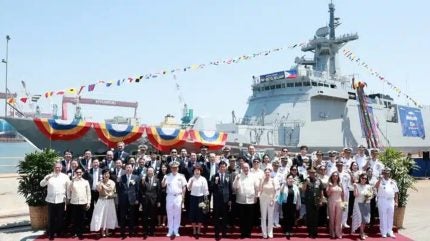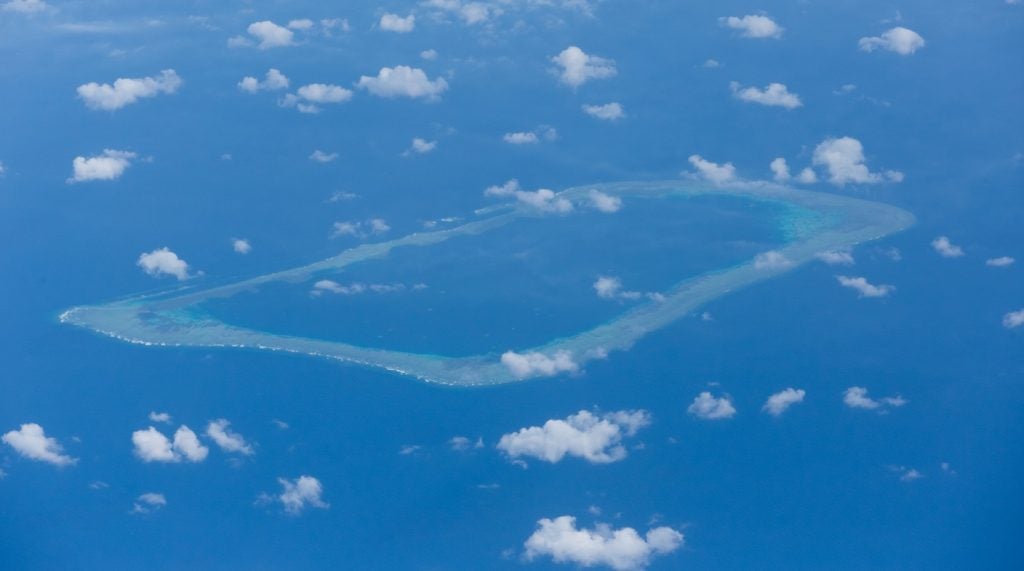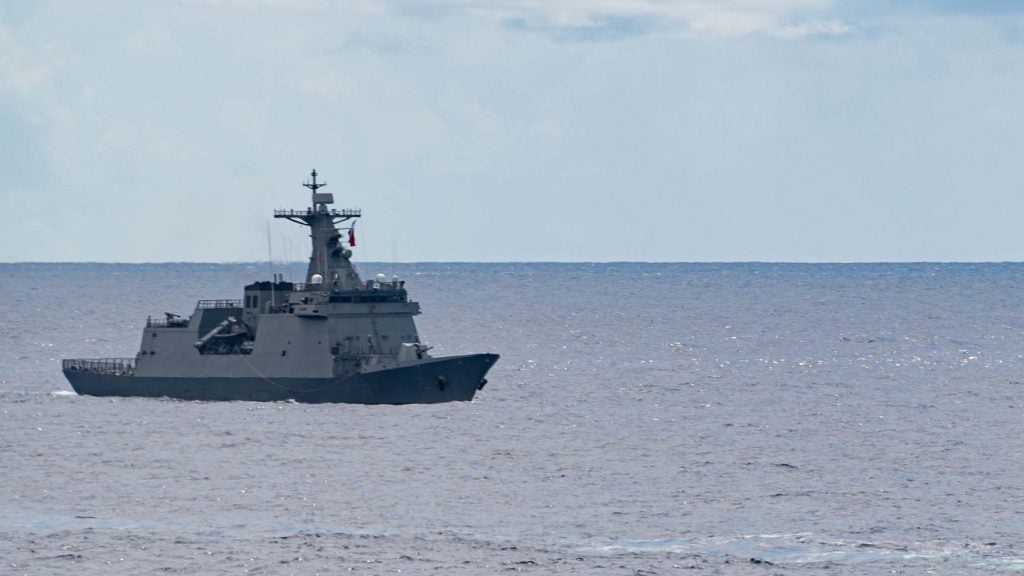
The launch of a new corvette for the Philippines looks set to contribute to an ongoing buildup of naval capabilities by the government in Manila amid rising tensions in the South China Sea, according to analysis by GlobalData.
Launched on 18 June 2024, the BRP Miguel Malvar is the first of two 118 metre-long corvettes being manufactured by South Korea’s HD Hyundai Heavy Industries (HHI) in Ulsan and is reported to have a cruising speed of 15 knots and a range of 4,500 nautical miles.
According to the Philippines embassy in South Korea, the vessel and its future sister ship will be equipped with “anti-ship missile, vertical launch systems, and 3D AESA radar”, announcing the launch in an 18 June release.
The BRP Miguel Malvar will undergo sea trials and outfitting before being delivered to the Philippine Navy by 2025.
The build is one of a number being undertaken by HHI for the Philippines, with the Philippines embassy in South Korea stating that ten vessels, ranging from frigates, corvettes, and offshore patrol vessels (OPVs), are planned to be manufactured by HII for the Philippine Navy.
Worsening situation in the South China Sea
According to GlobalData, the Philippines’ naval modernisation efforts are being carried out to counter China’s “assertiveness” in the South China Sea, which recently saw clashes during an attempted resupply mission in the region.
The clashes in mid-June saw Chinese personnel brandishing axes and knives, striking RHIBs operated by Philippines forces, with injuries reported on the Philippine side.
China claims the virtual entirety of the South China Sea under its infamous ‘nine dash line’, including waters within the exclusive economic zones (EEZ) of a number of countries, including the Philippines.

In order to counter this, the Philippines has embarked on a concerted effort to modernise its naval capabilities in order to deter China under the Horizon II programme.
The new corvettes, along with Jose Rizal-class frigates received earlier in 2016 and the upcoming Wonhae-class OPVs, will improve the Philippines’ naval capabilities, states GlobalData.
The recent launch of the BRP Miguel Malvar, the first of two corvettes ordered from HHI in 2021, marks a significant step in this process. The second corvette is due to launch by year-end, with both vessels joining the fleet within the next few years.
HHI has “pivotal” role in Philippine Navy modernisation
GlobalData’s report “The Global Naval Vessels and Surface Combatants Market Forecast 2024-2034” reveals that Philippine investment in procuring various types of naval vessels is expected to grow at a compound annual growth rate (CAGR) of 5.1% during 2024-34. The need to update its naval fleet as part of the country’s naval modernization program is primarily responsible for such growth.
Venkatesh Kandlikar, aerospace and defence analyst at GlobalData, said: “China’s recent assertiveness in the South China Sea has driven the Philippines to strengthen its territorial defense, a primary objective highlighted in the Revised Armed Forces of the Philippines (AFP) Modernisation Act passed in December 2012.
“The escalating presence of Chinese coast guard patrols and the establishment of military installations in nearby islands have further led to frequent clashes with Philippine vessels in the contested waters.”

The modernisation efforts of the Philippines are part of a broader regional trend in response to these escalating challenges, with countries such as Vietnam, Indonesia, Singapore, Malaysia, and Brunei also looking to improve maritime capabilities to counter China’s assertions.
Kandlikar added: “While this collective effort has the potential to restore stability in the South China Sea, there are also concerns about the risk of wider military escalation in the region.
“Given the strategic importance of the South China Sea, characterised by overlapping territorial claims and crucial trade routes, there is apprehension about potential entanglements with major global powers, including the US and its allies.”
Amidst these escalating tensions, collaboration among the Philippines Navy, the Philippine Coast Guard, and the Bureau of Fisheries and Aquatic Resources becomes critically important. Through coordinated efforts and pooling of resources, these agencies can effectively enforce maritime laws and patrol the EEZ, stated GlobalData.
Kandlikar concluded: “Over the period 2024-34, a substantial portion of the Philippine Navy’s inventory is expected to largely feature cost-effective naval platforms built by South Korea. HHI’s scheduled delivery of corvettes, OPVs, and maintenance services for the in-service naval fleet plays a pivotal role in the country’s naval modernisation efforts.”







